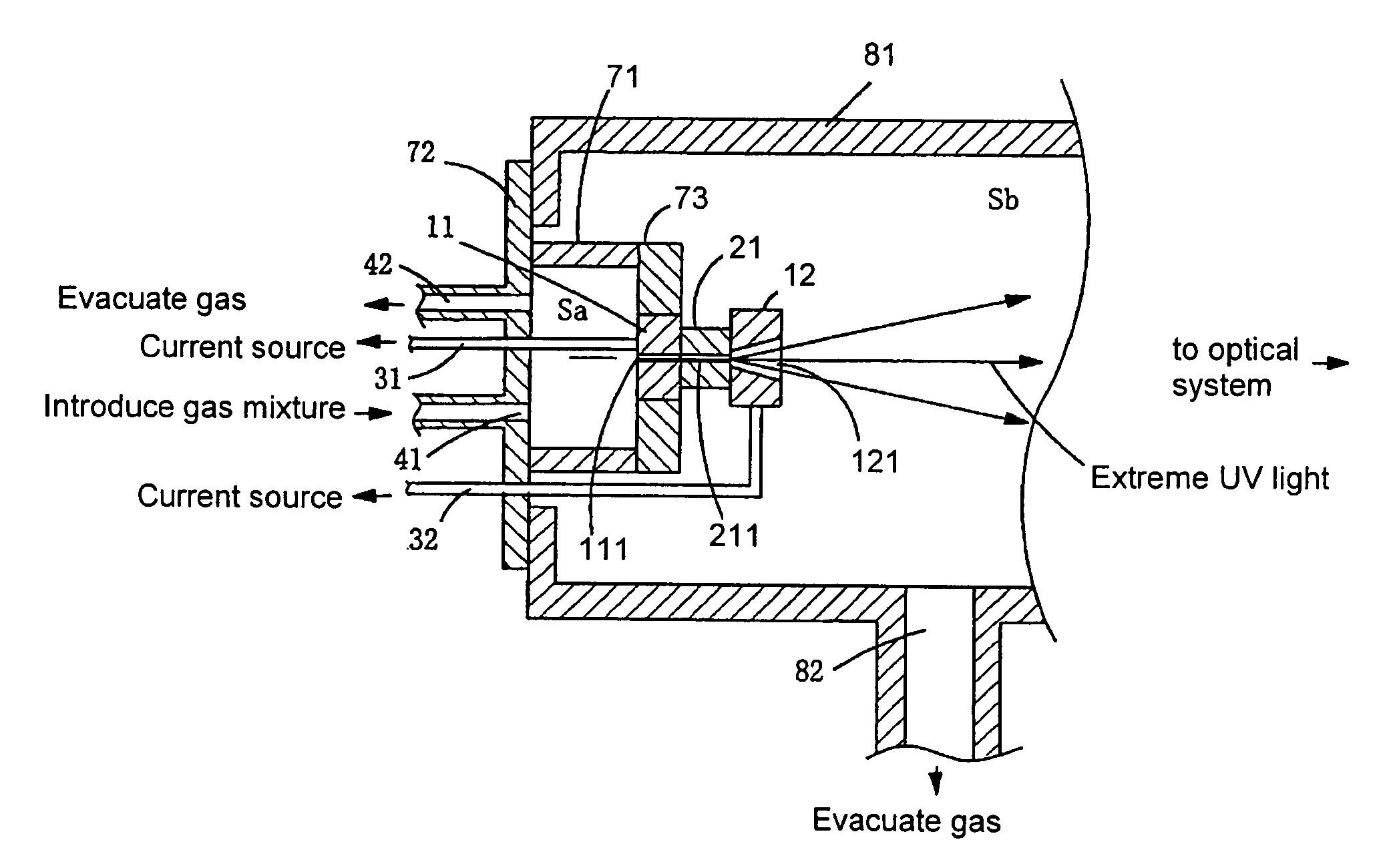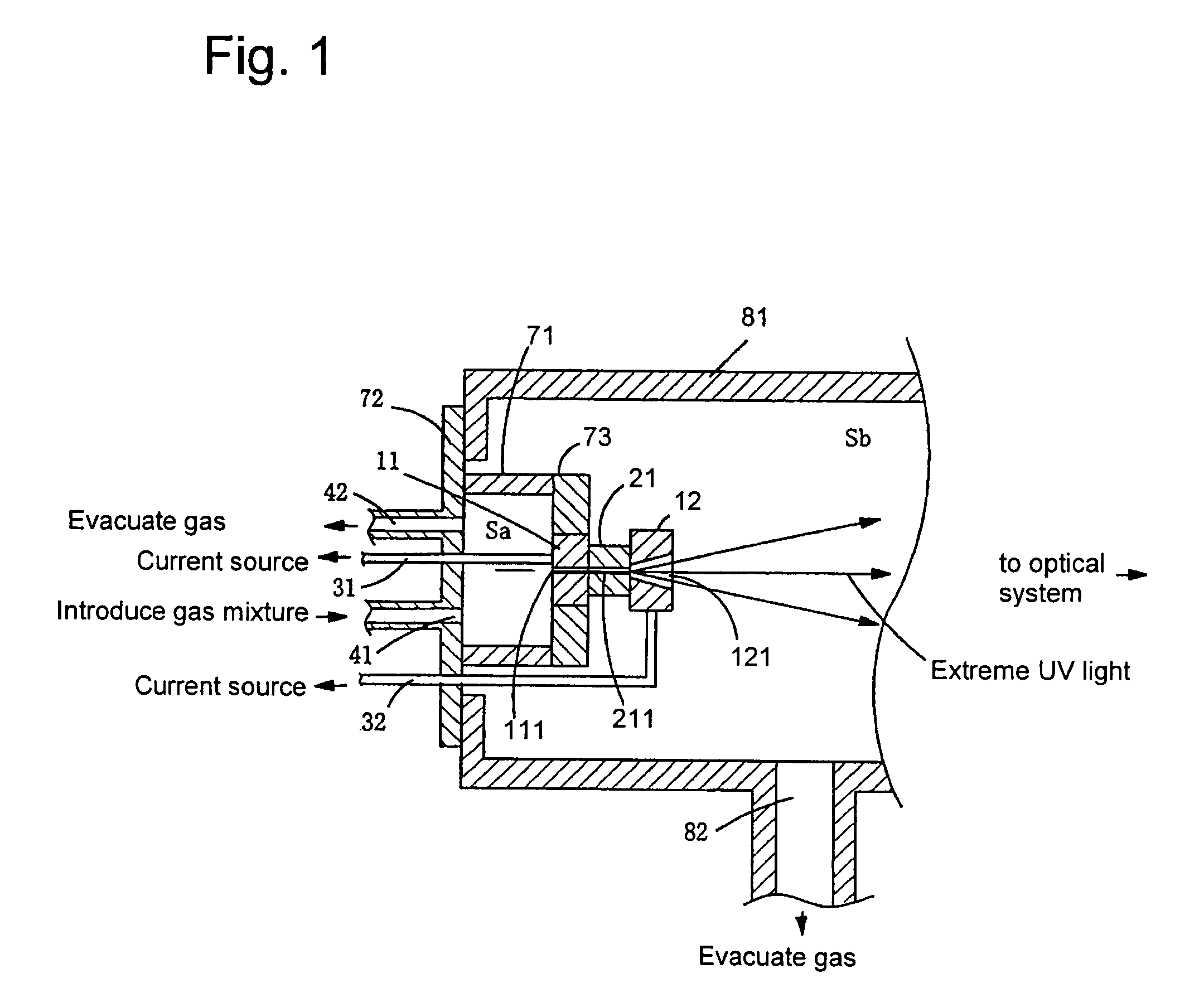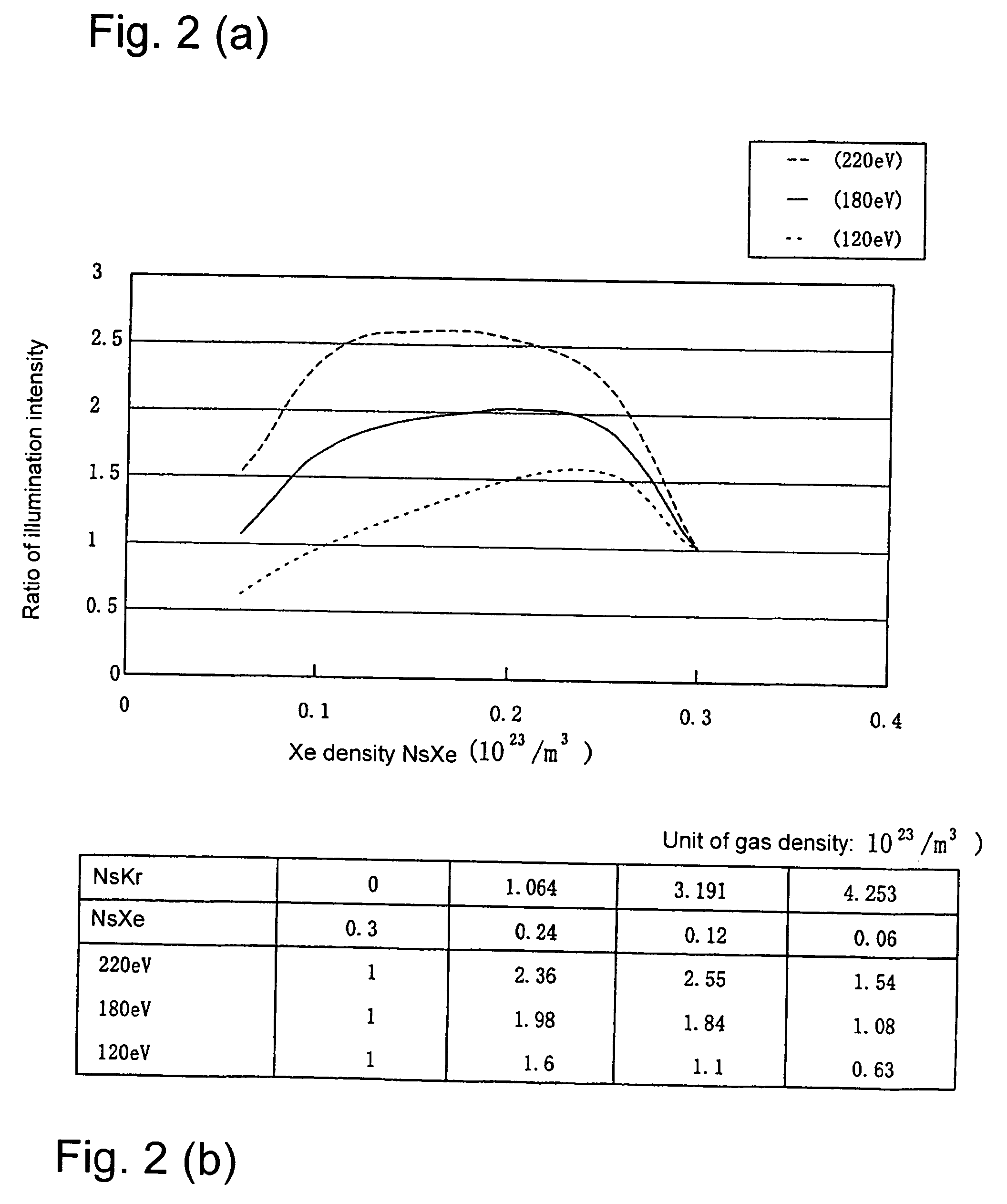Extreme UV light source and semiconductor exposure device
a light source and exposure device technology, applied in the field of extreme uv light source and semiconductor exposure device, can solve the problems of increasing the load of the evacuation pump, the inability of the optical system to use the optical system, and the inability to build a semiconductor exposure device which will withstand practical use in the industry, etc., and achieves a large absorption cross-sectional area and increased radiation density.
- Summary
- Abstract
- Description
- Claims
- Application Information
AI Technical Summary
Benefits of technology
Problems solved by technology
Method used
Image
Examples
Embodiment Construction
[0058]FIG. 1 is a schematic of one example of an arrangement of an extreme UV light source using a capillary discharge with which the invention is used. FIG. 1 is a cross section which is cut by a plane which passes through the optical axis of the extreme UV light which is emitted from the extreme UV light source.
[0059]As is shown in FIG. 1, between the first electrode 11 and the second electrode 12, for example, of tungsten, there is a capillary body 21 which is a cylindrical insulation body which is made, for example, of silicon nitride or the like and which has a capillary 211 with a diameter of 3 mm in the middle. The material for the electrodes 11, 12 can also be tantalum. The material for the capillary body 21 can also be aluminum nitride or diamond.
[0060]A current source (not shown) is electrically connected to the first electrode 11 and the second electrode 12 via electrical lines 31, 32. Between the first electrode 11 and the second electrode 12, a high voltage is applied i...
PUM
 Login to View More
Login to View More Abstract
Description
Claims
Application Information
 Login to View More
Login to View More - R&D Engineer
- R&D Manager
- IP Professional
- Industry Leading Data Capabilities
- Powerful AI technology
- Patent DNA Extraction
Browse by: Latest US Patents, China's latest patents, Technical Efficacy Thesaurus, Application Domain, Technology Topic, Popular Technical Reports.
© 2024 PatSnap. All rights reserved.Legal|Privacy policy|Modern Slavery Act Transparency Statement|Sitemap|About US| Contact US: help@patsnap.com










